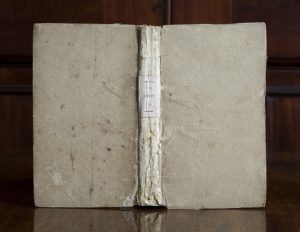
Repairing a human spine can be a scary endeavor—and with 33 bones, there’s a lot to study in order to get good at it! But for Halloween month our library is thinking about repairing a different kind of spine: the book spine.
If you’ve ever had a book break on you, you might be tempted to throw it out. Libraries, however, try to preserve books when they can. If they last a little longer more people can check them out and use them.
Nikki Tinsman used to be the head of the Circulation Department at the Green Valley Library in Henderson, and continues to dabble in book repair today. She offered these tips if you need to do a little spine surgery of your own!
First, check to see if it’s the inside of the book spine that needs repairing or the outside. Different techniques will be used depending on which part is broken.
Next, have several types of tape to work with. Thicker tape is better for when the spine is exposed—when the strings that bind the book are no longer covered. Taping down the entire length of the book helps here too.
If the spine is still covered but just needs a small repair, thinner strips of tape can be run down the front and back of the book.
Make sure your tape is acid-free, especially if you are repairing a book that you want to keep for a while.
Finally, review some helpful videos to learn the specific techniques for how to apply the tape properly. For example:
Beginners Guide to Book Binding: How to Tape the Book Spine
Some libraries might want to preserve a book for many years—especially if it’s part of a permanent or special collection (think unique objects where it would be harder to find a replacement copy). In this case, you wouldn’t use tape at all! The process is called “restoration and conservation” instead of repair. For that, quality tools are needed: special glues, cloths, and acid-free products. If you’re interested in that level of book repair, you can search our library website for information too! Type your keywords in our main search bar or ask a librarian for help!


